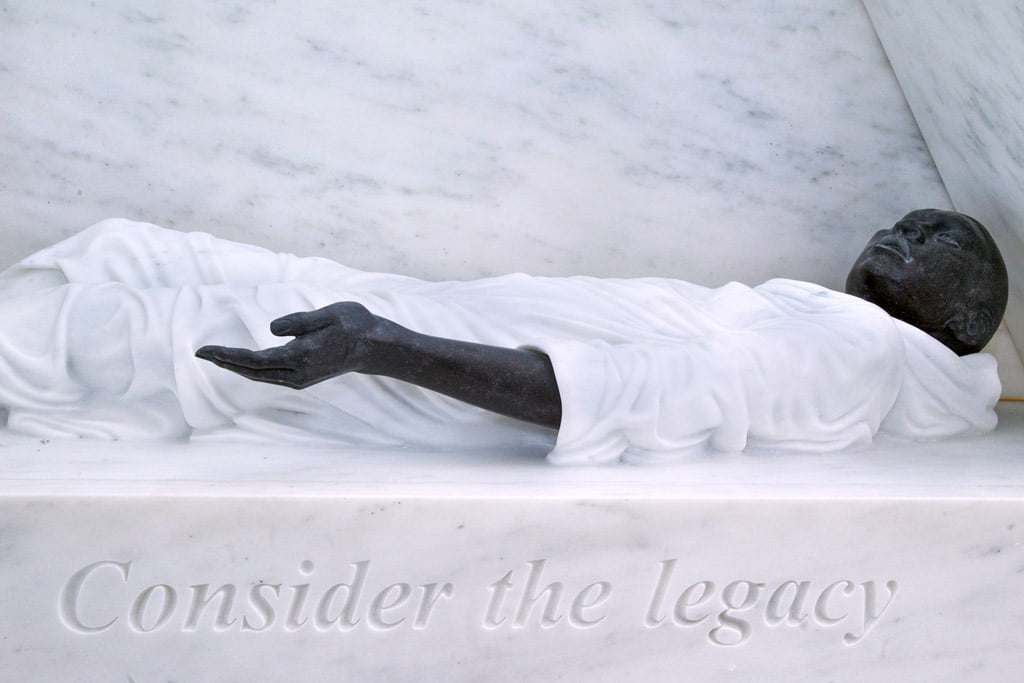

This statue was unveiled at the United Nations Headquarters today to mark the UN’s International Day of Remembrance of the Victims of Slavery. It’s called the “The Ark of Return” and is designed by Rodney Leon, a Hatian-American architect.
The tagline is instructive: The Transatlantic slavery trade may have ended hundreds of years ago, but slavery in the form of human trafficking continues throughout the world.
Though the horrific Transatlantic slavery trade was open and widely accepted, traffickers today are hiding in plain sight. Human trafficking for sexual exploitation occurs in nearly every country in the world, with victims found in 124 countries, according to Ilias Chatzis Chief of the Human Trafficking and Migrant Smuggling Section of the UN Office on Drugs and Crime (UNODC). Of the 21 million people estimated by the International Labor Organization to be victims at the moment, well over half are women and nearly half are trafficked for sexual slavery and exploitation.
The signs are not as obvious as they were 300 years ago in Haiti and the American South, and as Chatzis explains, recognizing and prosecuting human traffickers is complicated and requires an exceedingly high burden of proof. There are typically three main elements required to fit the global definition of trafficking and all three must usually be met prosecute a someone for the crime.
Chatzis says there first needs to be an ‘act’ of recruitment, transportation, transfer, or harboring of persons. The ‘means’ in which people are trafficked, such as threats of force, coercion, kidnapping, fraud or abuse of power is the second element. Finally, there has to be a clear ‘purpose’ to the crime, meaning there needs to be sexual exploitation, forced labor or slavery, or similar practices in order to be classified as human trafficking.
As a result, Chatzis explains that there is incredibly low prosecution rates. Approximately 4 in 10 UN Member States say they have less than ten yearly convictions and 15% say there are no convictions at all despite very obvious anecdotal evidence that suggests trafficking is a problem in their country.
Another issue is the UN method of gathering these global statistics from the Member States themselves. All these numbers could in reality be far higher if there was an accurate method of collecting data on number of victims, reasons trafficked either labor or sexual exploitation, and the amount of money truly made from slave labor.
Regarding sex slaves in particular, there is little accurate data yet on the effects of legalizing prostitution and its effects on human trafficking. The psychological effects on former slaves is also a largely ignored factor in policing strategies as well, perpetuating the victim-criminal cycle of recidivism.
The memorial dedicated at the UN today is certainly important, but it cannot end the discussion on slavery. It cannot symbolize a history or even a reminder of a dark part of the world’s past because slavery continues today for millions around the world.
